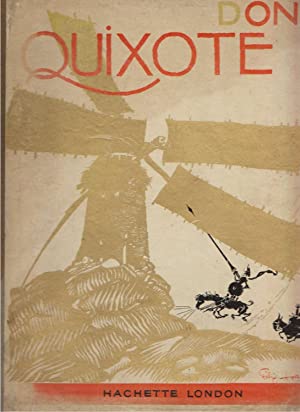Let’s get on a literary trip to Spain, 400-years-back in history. In your head, aren’t the knights a commonplace phenomenon of the past, lives choking with adventures of treasure hunts, fighting the battle, freeing the slaves and killing the monsters? No, this isn’t ‘The Odyssey’ era; human lives were perhaps as mundane as it is in the 21st century (obviously not referring to the present times). Cervantes thought of a nobleman going crazy in a place called La Mancha, rural Spain where a reading over-dose made him believe his real identity to be of a Knight-errant.



Don Quixote by Miguel de Cervantes is considered as the first modern novel. This book was published in Spanish in two parts as “El ingenioso Hindalgo Don Quijote de La Mancha” (The Ingenious Hidalgo Don Quixote of La Mancha) and “Segunda parte del ingenioso caballero don Quijote de la Mancha” (The Ingenious Knight Don Quixote of La Mancha) in 1605 and 1615. The English translation was published in 1612 and 1620.
In trivia regarding Cervantes, it is said that he penned ‘Don Quixote’ in jail. Cervantes worked as a tax collector for the Spanish government but it couldn’t save him from debts which eventually landed him in the Crown Jail of Seville twice between 1597 and 1602.
Today, the popularity of ‘Don Quixote’ in Western literature has surged quite high. Don Quixote is the story of Alonso Quixada, a 50-years-old gentleman living with his niece and housekeepers at La Mancha, Spain. In a sudden spurt, he believes he is Knight-errant named Don Quixote and needs to venture out on an adventure.
The initial few pages read like a parody, as Quixote takes his neighbor Sancho Panza as his squire, promising an island in return for his services. A neighbouring farm girl is thought to be Dulcinea del Toboso, the lady love in Quixote’s life. Quixote’s chivalry is meant to win over this ‘princess-in-the waiting’, Dulcinea.
As you begin to question the utter futility in following the narrative of a delusional nobleman, Cervantes weaves in subsidiary stories and fiction within the fiction. Don Quixote is also a published chronicle of Knight-errantry by the end of part one and the knight-errant finds a fake sequel to it too. Yes, a complex, meandering narrative structure to follow.

From the beginning, the book covers have concentrated on the picture of Don Quixote and his squire Sancho Panza. Undoubtedly, these two fictional figures have been immortalized. Occasionally, there has been the windmill in the background that Don Quixote terms as giants with long arms and tall frames. Don Quixote believes his nemesis is continuously using evil magic to change giants to look like windmills and his princess Dulcinea as the farm girl.
The legacy of Don Quixote has left us with ‘quixotic’ meaning the impractical pursuit of idealistic goals. Don Quixote’s cover may not leave us with many interpretations but the story can be assessed at two divergent levels, either as a true comical novel or as a social commentary on romanticized idealism.
Thanks for being kind enough to read my posts, you can read through the series by clicking on the following links A, B, C, D, E, F, G, H, I , J, K, L, M, N, O, P
Pingback: A Portrait of the Artist as a Young Man by James Joyce: A Letter to the Book Cover #A2Z Challenge – Bookishloom
Pingback: Buying a Fishing Rod for My Grandfather by Gao Xinjiang: A Letter to the Cover #A2Z challenge – Bookishloom
Pingback: The White Tiger by Aravind Adiga: A Letter to the Book Cover #A2Z Challenge – Bookishloom
I have once picked this book from my college library. But couldn’t continue because I found it little difficult to read.
Now, I think I should pick it again.
Really loved this post.
LikeLiked by 1 person
Yes, you should definitely try reading it now…you only need to be patient with the length of this book. Thanks for stopping by!
LikeLiked by 1 person
Remember reading the abridged version during school days. Must read it again!
LikeLiked by 1 person
Oh, I didn’t know of the abridged version. Happy reading and thanks for stopping by!
LikeLiked by 1 person
Another classic that’s been on my TBR list forever!
LikeLiked by 1 person
It stayed on my TBR for quite long as well. Thanks for stopping by!
LikeLike
Pleasure 😊
LikeLike
I have come across books with the third design, occasionally perhaps the second one. Never across the third one. The wind mill design gives a different idea about the novel.
LikeLiked by 1 person
Indeed…I find the windmill more intriguing than to literally give away with Don Quixote and Sancho Panza on the cover. Thank you so much!
LikeLike
I am certainly too late in reading classics. I haven’t even heard about this book. It makes me feel FOMO.
I would check it out soon. Thanks for recommending this. 😊
LikeLike
I have the one by Penguin. It’s certainly a timeless classic. No wonder about its soaring popularity.
LikeLiked by 1 person
Yes, indeed it is a timeless classic. Thank you so much for visiting 😊
LikeLike